July 3, 2022
On our last day in Portugal we met up again with Bernard, our friendly bird guide, in the Sado Estuary, an area of wetlands known for its many species of birds.
There wasn't anything too exciting, so we stopped at a small education center that Bernard told us children visit on school trips.
The pathway up to the building was lined with fun bird sculptures.
An exhibit showed how the tides were used to mill grain, starting in 1601.
It's been a while, and I can't remember exactly how it all worked, but it had something to do with raising and lowering this gate to create water pressure. (Ask an engineer.)
However, I DO remember a small bakery on site that sold one of my favorite treats: Brazilian brigadeiros.
We stopped in a park area to pay homage to this enormous cork oak tree. The perimeter of its base measures 5.24 meters, or over 17 feet. It stands 16.2 meters or 53 feet tall. It is estimated to be about 233 years old. Once a tree gets this old, I guess they quit stripping the cork from the trunk.
A sign on-site says, "One of the oldest and most productive cork oak trees in the world is the "whistle tree" . . . . It is presumed to have been planted in 1783, and the origin of its name is related to the numerous songbirds that live among its branches. It has been stripped more than 20 times since 1820. In 1991, its stripping resulted in more than 1200 kg of cork, which is more than most trees produce in their entire lives. The harvest alone allowed producing more than one hundred thousand stoppers."
We could see how thick the cork bark is.
By the way, it should come as no surprise that the cork oak is the national tree of Portugal. Do you know what the national tree is for the United States? I had to look it up. It is also the oak tree, but just the generic oak, which has many varieties, even in the U.S.
We stopped for lunch at a hamburger place in a cute little town on the water. The food was average, but the view was great.
Yeah, that's a castle on the hill. There seem to be castles everywhere.
I really like these evergreen (pine?) trees on their tall trunks. The remind me a bit of the baobab trees in Africa.
It was very picturesque in its own weird way.
It was an okay day, but not nearly as good as the first day we spent birdwatching with Bernard earlier in the trip.
We retrieved our car from the parking lot and drove to Lisbon, where we checked into our hotel, which was within walking distance of the airport. The hotel had a Hollywood vibe.
Before returning our car to the rental agency, we stopped to walk around the Lisbon LDS Temple, which was just dedicated in 2019.
Like all LDS temples, the landscaping is stunning.
On our way back to the car rental return, we passed some great murals. Portugal does outdoor art well.
We shared a pizza in the hotel restaurant and called it a day, returning to our rooms to catch a few hours of sleep.
We got up at 2:00 AM and took a cab to the airport at 3:00. We should have walked it. It cost 15€ for a five-minute ride. The meter in the car said 3.5€, but there was a huge surcharge because of the time.
Our final moments in Portugal were not without drama. We had not been able to check in online. The self check-in machines weren't working, and it took forever to check in and get our boarding passes. However, we were entertained by some of the other passengers in line.
We had TWO layovers after leaving Lisbon. We spent 1.5 hours in the passport control line in Paris, but had time to eat lunch at a nice cafe before settling in to wait for our flight to Seattle, which left an hour late. Eventually we made it home, and all too soon our wonderful Portuguese adventure was just a memory.
What a great trip. Why don't we know more people who have traveled there?
























.JPG)


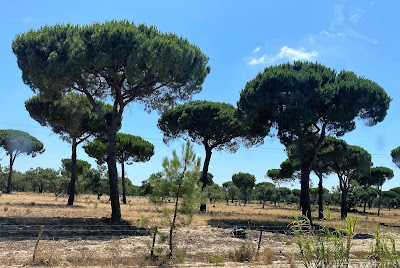




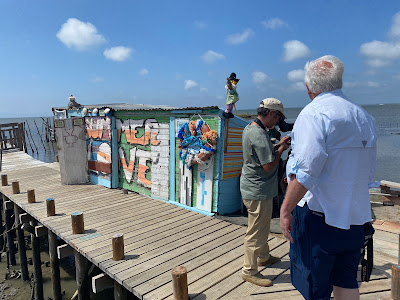

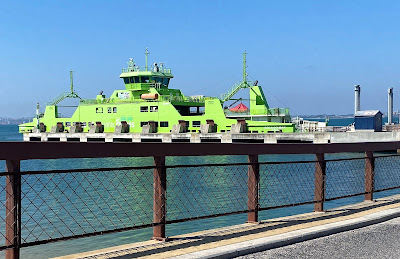







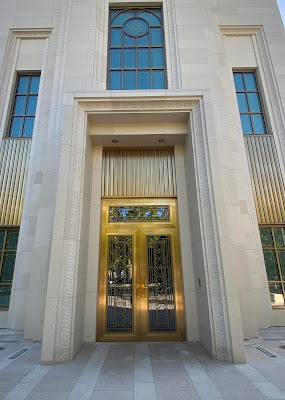

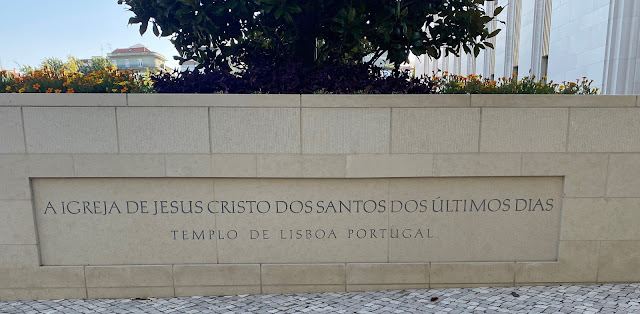









.JPG)



(Bob) I particularly loved driving out to the end of the Troia Peninsula and taking the Ferry across to Setubal. Overall, I think it was an amazing trip. We got to see a lot of what Portugal has to offer as well as Santiago de Compostela which was a highlight for me. We got a good sampling of food, some great restaurants; we saw lots of churches which have some significant variations for Catholic churches we've not seen in other countries, as well as pilgrimage sites like Fatima and Santiago de Compostela; we saw some of the natural wonders of Portugal, including the Tagus and Sado Estuaries, the cliffs and beaches at Nazare, the cork trees and the furthest eastern point of the European continent; and many cultural and historical wonders, like the buildings and market in Estremoz, multiple castles, etc. I put Portugal up as one of my favorite destinations in Europe.
ReplyDelete